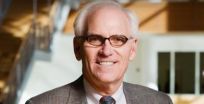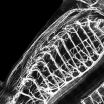Young, male, testosterone-fueled CEOs more likely to start or drop deals: UBC study
2010-09-08
(Press-News.org) Too much testosterone can be a deal breaker, according to Sauder School of Business researchers at the University of British Columbia. Their paper, to be published in the INFORMS journal Management Science on September 10, shows that young CEOs with more of the steroidal hormone in their system are more likely to initiate, scrap or resist mergers and acquisitions.
The study by Sauder Finance Professors Maurice Levi and Kai Li, and PhD student Feng Zhang, titled "Deal or No Deal: Hormones and the Mergers and Acquisitions Game," shows that testosterone – a hormone associated with male dominance-seeking in competitive situations – can be a negative factor in high-stakes decision making.
"We find a strong association between male CEOs being young and their withdrawal rate of initiated mergers and acquisition," says Prof. Levi, whose research relies on the established correlation between relative youth and increased levels of testosterone.
"For instance, young CEOs, who have higher levels of testosterone, tend to reject offers even when this is against their interest."
The study shows that younger CEOs operating with more testosterone in their systems are 20 per cent more likely to withdraw a merger or acquisition bid than their older counterparts. Young CEOs are also four per cent more likely to flex their managerial muscles and attempt to acquire other companies.
As well, when companies run by young male CEOs are targeted for a mergers or acquisitions, there is a two-per-cent greater chance the CEOs will resist, pushing the bidder to pursue a hostile takeover that bypasses company leadership.
The researchers analyzed 350 merger and acquisition bids in the United States between 1997 and 2007, using a securities database from Thomson SDC.
The Sauder study builds on a 2007 experiment by Harvard University Economics Prof. Terence Burnham, which examined the role of testosterone in the "ultimatum game," a negotiation between two people where participants often reject offers of free money, defying standard economic rationality.
In the two-player game, subjects had to agree on how to divide 40 dollars or risk losing it all. Participants who begin with the entire sum of money could offer only five dollars or 25 dollars to their competitor.
Burnham found that, among those considering the offers, participants with higher levels of testosterone were more likely to reject what they perceived as low offers, ending up with nothing as a result.
###
A podcast interview with Prof. Levi on the results of "Deal or No Deal: Hormones and the Mergers and Acquisitions Game" can be found on the INFORMS website at www.scienceofbetter.org/podcast.
About the Sauder School of Business
The Sauder School of Business is Canada's leading academic business school, recognized globally for its contributions to the transformation of business practices through innovative research and teaching. The school has more than 31,000 alumni in 74 countries around the world
END
ELSE PRESS RELEASES FROM THIS DATE:
2010-09-08
Fairbanks, Alaska—A University of Alaska Fairbanks fisheries scientist has teamed up with Alaska Power and Telephone to study how a new power-generating turbine affects fish in the Yukon River.
So far, the news looks good for the fish.
"In the brief testing that we have been able to accomplish, we have no indication that the turbine has killed or even injured any fish," said Andrew Seitz, project leader and assistant professor of fisheries.
Alaska Power and Telephone installed the in-stream turbine near Eagle, Alaska this summer. They are testing its effectiveness ...
2010-09-08
CHAMPAIGN, Ill. – There's a reason why some sports fans are referred to as "die-hards" – even after they move away, their loyalty to their hometown team endures, according to research by two University of Illinois professors.
Scott Tainsky and Monika Stodolska, professors of recreation, sport and tourism, say new residents of a community maintain an attachment to their old team or former city as a way of asserting their identity after they move.
"People new to a city don't just adopt their new hometown's team as a way to acclimate themselves in a new community," Tainsky ...
2010-09-08
CHAMPAIGN, Ill. — A University of Illinois economist says consumers and investors concerned about the specter of deflation looming over an already bleak economic landscape should relax – for the time being, at least.
Although the consumer price index is near zero, J. Fred Giertz says we're unlikely to see a prolonged deflationary period like the slump Japan experienced during its "lost decade" of the 1990s.
"We're close to zero right now, but we're not below zero," said Giertz, an Institute of Government and Public Affairs economist who compiles a monthly barometer ...
2010-09-08
PROVIDENCE, R.I. [Brown University] — Most proteins are shapely. But about one-third of them lack a definitive form, at least that scientists can readily observe. These intrinsically disordered proteins (IDPs) perform a host of important biological functions, from muscle contraction to other neuronal actions. Yet despite their importance, "We don't know much about them," said Wolfgang Peti, associate professor of medical science and chemistry. "No one really worried about them."
Now, Peti, joined by researchers at the University of Toronto and at Brookhaven National Laboratory ...
2010-09-08
A new study identifies molecules that can be used to selectively reduce generation of the sticky, neuron-damaging plaques that are the hallmark of the Alzheimer's disease (AD) brain. The research, published by Cell Press in the September 9 issue of the journal Neuron, may lead to the development of effective and safe therapeutics for this currently incurable disease.
Previous research has suggested that an alteration in brain levels of amyloid ? proteins (A?) plays a major pathogenic role in AD, a devastating neurodegenerative disorder that causes progressive cognitive ...
2010-09-08
Addictive drugs are known to induce changes in the brain's reward circuits that may underlie drug craving and relapse after long periods of abstinence. Now, new research, published by Cell Press in the September 9 issue of the journal Neuron, uncovers a specific neural mechanism that may be linked to persistent drug-seeking behavior and could help to guide strategies for development of new therapies for cocaine addiction.
Previous research has shown that the ventral tegmental area (VTA) is a brain region that is activated when cocaine users experience a craving for cocaine ...
2010-09-08
New York (September 8, 2010) – In a surprising and unexpected discovery, scientists at NYU Langone Medical Center have found that a single type of gene acts as a master organizer of motor neurons in the spinal cord. The finding, published in the September 9, 2010 issue of Neuron, could help scientists develop new treatments for diseases such as Lou Gehrig's disease or spinal cord injury.
The "master organizer" is a member of the Hox family of genes, best known for controlling the overall pattern of body development. By orchestrating a cascade of gene expression in ...
2010-09-08
A team of scientists, led by University of California, San Diego School of Medicine researchers, has synthesized hundreds of new compounds with the potential of reducing the production of the A-beta 42 peptide, a primary component of Alzheimer's disease (AD).
In mouse models, one tested compound specifically reduced levels of A-beta 42, which is believed to be responsible for the destruction of neurons, but left other essential enzymatic activities in the brain unaffected, said Steven Wagner, PhD, a project scientist in the UCSD Department of Neurosciences.
The ...
2010-09-08
A group of international astronomers in the UK, France and the USA, led by the University of Leicester, have found proof to confirm the distance and brightness of the most extreme ultra-luminous X-ray source, which may herald a new type of Black Hole.
The X-ray source, HLX-1, is the most extreme member of an extraordinary class of objects – the ultra-luminous X-ray sources – and is located in the galaxy ESO 243-49 at a distance of ~300 million light years from the Earth.
The astronomers' findings confirm that the extreme luminosity (which is a factor of ~100 above ...
2010-09-08
CAMBRIDGE, Mass. – A type of neuron that, when malfunctioning, has been tied to epilepsy, autism and schizophrenia is much more complex than previously thought, researchers at MIT's Picower Institute for Learning and Memory report in the Sept. 9 issue of Neuron.
The majority of brain cells are called excitatory because they ramp up the action of target cells. In contrast, inhibitory cells called interneurons put the brakes on unbridled activity to maintain order and control. Epileptic seizures, as well as symptoms of autism and schizophrenia, have been tied to dysfunctional ...
LAST 30 PRESS RELEASES:
[Press-News.org] Young, male, testosterone-fueled CEOs more likely to start or drop deals: UBC study




